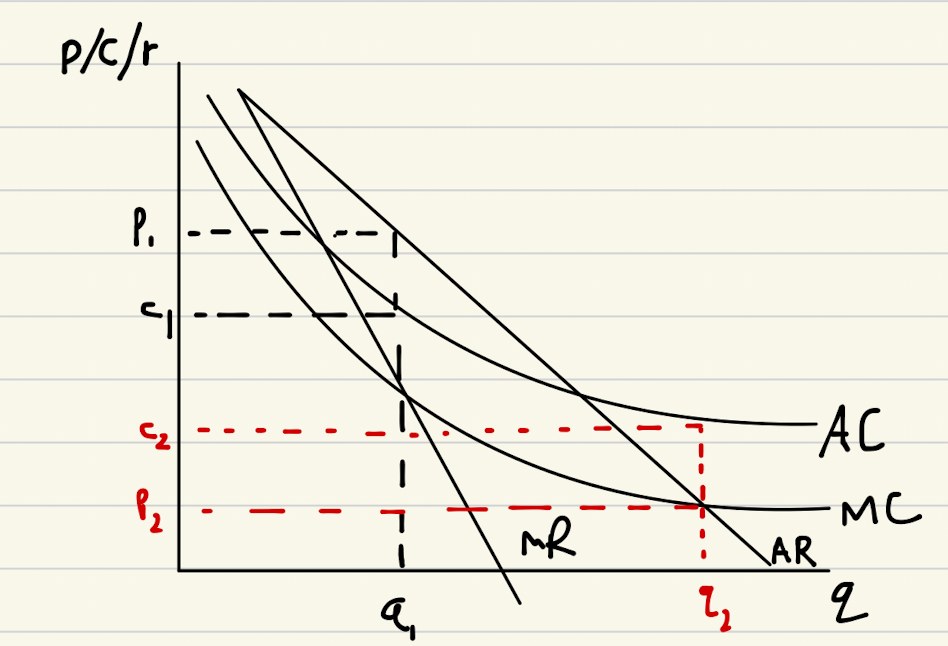Monopoly power is when firms have a high market share, and therefore the power to set their own prices. They also have high barriers to entry in the form of high start up costs. Due to these extremely high start up costs, energy firms will benefit from an L-shaped LRAC curve because the economies of scale outweigh the diseconomies of scale over a much larger range of output. This means we can call them a natural monopoly.

The diagram is similar to that of a monopoly, except for the L-shaped average cost curve and marginal cost curve. The energy firm is likely to operate at the profit-maximising quantity q1 (where MC = MR), and set a price of p1. This is a misallocation of resources, so the government may consider nationalisation as the best solution. The allocatively efficient outcome would be at the point where AR = MC, which is shown by q2 and p2. The problem is, there would be no incentive for a firm to operate at this point. Even if the government enforced this maximum price, the firm would make a loss as shown by the red dotted rectangle. Therefore, the government would have to subsidise these losses to keep the firm in business. Therefore, it could be sensible to nationalise this industry. Nationalisation will lead to lower prices for consumers which the private firm would have no incentive to sell at. There would be a more efficient allocation of resources.
However, the monopoly was previously making a high amount of profit as shown by the black dotted rectangle. This meant that they had more chance of achieveing dynamic efficiency, which is due to the re-invest of long run supernormal profits. This can lead to innovation and improvements in quality, which will benefit consumers over time. The government have to juggle a lot of different priorities, which means every decision has a greater opportunity cost. Therefore, they are less likely to invest in the energy industry, even if it is nationalised. They are not further incentivised by profit in the same way that a privately owned firm would be.